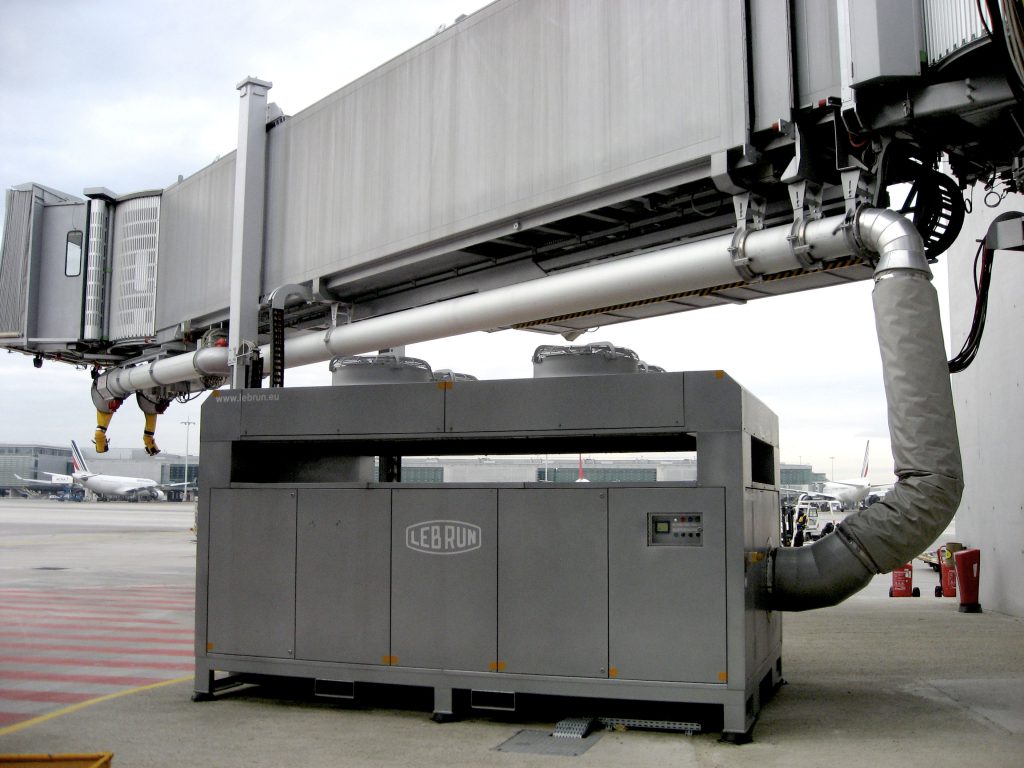
Maintaining a comfortable environment inside an aircraft is crucial during turnaround operations, whether it's a scorching summer day or a chilly winter evening. To achieve this, aircraft typically rely on their Auxiliary Power Unit (APU) or other ground-based systems when no suitable ground facilities are available. However, using the APU on the ground is costly, environmentally unfriendly and inefficient due to its low energy efficiency and emissions. Electric Preconditioned Air Units (PCA units), a more sustainable and cost-effective alternative that not only benefits the airlines but also the environment.
During ground operations, an aircraft's onboard air conditioning system, typically powered by jet engines or the APU, is turned off. However, the need for air conditioning persists, especially when passengers remain on board or airline staff are conducting various tasks inside the aircraft. Without proper cooling or heating, the cabin can quickly become uncomfortable. Therefore, pilots have three options to maintain a comfortable cabin environment
The term "Preconditioned Air" may sound peculiar, but it originates from HVAC (Heating, Ventilation and Air Conditioning) engineering terminology. In HVAC, the space that requires cooling or heating is referred to as the "conditioned space." An air conditioner is a machine that takes in outside air, filters it, adjusts its temperature and humidity and then supplies it to the conditioned space. The air that has been treated and is ready to enter the conditioned space is known as "conditioned air."
In the case of aircraft, the interior of the aircraft serves as the conditioned space and the internal air conditioning system supplies conditioned air through the aircraft's distribution network. Therefore, "Preconditioned Air" is aptly named because it's air that doesn't require further treatment by the aircraft's internal air conditioning system; it's already conditioned and ready for distribution inside the aircraft.
PCA units come in two primary types based on their power source:
Engine-Driven Preconditioned Air (PCA) Unit: These units are powered by internal combustion engines, typically diesel engines, which generate electricity to run the HVAC refrigeration compressors of the PCA unit. Some advanced engine-driven units use direct-drive technology, where the engine directly drives the refrigeration compressor without an electrical generator.
Electric Preconditioned Air (PCA) Unit: Electric PCA units run on utility power supplied by the airport's building power supply. All of their components and circuitry are powered by this external supply. They produce no emissions on the ramp and are generally more energy-efficient and quieter than engine-driven PCA units.
PCA units can also be categorized based on their installation:
Mobile Preconditioned Air (PCA) Units: Mobile PCA units are mounted on carts that can be towed to different locations or installed on truck chassis, providing flexibility in their placement. They are often used for remote aircraft stands.
Fixed On-Ground PCA Units (Apron Mounted): These units are installed on the aircraft stand (ramp) and are typically electrically powered. They supply air to the aircraft through underground pipes or ducts installed under the jet bridge.
Bridge-Mounted PCA Units: These units are installed on the jet bridge itself, either hanging under the telescopic tunnels of the bridge or mounted over the bridge. They are often electric PCA units and help save ground space on the ramp.
The choice of PCA units for an airport is a strategic decision made during the airport's design and planning stages. Several factors influence this choice:
Airports are increasingly opting for electric PCA units due to their reduced emissions and energy efficiency, aligning with stringent aviation regulations on environmental preservation. Electric PCA units draw power from the airport building, which is often more energy-efficient than generating power on-site with diesel engines.
Airports typically have a mix of contact stands (equipped with jet bridges) and remote stands (lacking jet bridges). Contact stands are often served by fixed on-ground or bridge-mounted electric PCA units for efficiency. Mobile PCA units are preferred for remote stands, as they offer greater flexibility and don't rely on available power sources.
Bridge-mounted PCA units are favored for their minimal ground footprint, freeing up space on the ramp for other ground support equipment and enhancing safety. Fixed on-ground units can also save space if equipped with utility pit systems. Mobile units, due to their positioning close to the aircraft, can contribute to ramp congestion.
Mobile PCA units have no installation costs, whereas bridge-mounted and fixed on-ground units incur installation expenses. Bridge-mounted units require additional supports and hose trolleys, while fixed on-ground units need foundations and hose management solutions.
The capacity of a PCA unit is determined by the largest aircraft the stand is designed to accommodate. Narrow-body aircraft typically require a single PCA unit with a capacity ranging from 40 to 60 tons of refrigeration (TR), depending on the airport's climate. Wide-body aircraft may require multiple PCA units or a single larger unit, with capacities reaching up to 90 TR. Airbus A380, being the largest commercial aircraft, often has four PCA receptacles to meet its substantial air conditioning needs.
GEMS' innovative and efficient PCA units not only enhance your operational efficiencies but also contribute to a greener aviation future. By replacing traditional aircraft APUs with GEMS' advanced technology, you not only increase your revenues but also reduce your environmental impact, making your airport an attractive choice for airlines looking to cut costs and embrace sustainability. With the capability to manage a vast number of PCAs, ensure compliance with industry standards and serve a wide range of aircraft, including the A380, GEMS is the trusted partner for airports aspiring to lead in eco-friendly and cost-effective aviation solutions.
If you need any services, drop us a mail at Rohitkumar.Singh@gmrgroup.in or get in touch with us at +919717199753.